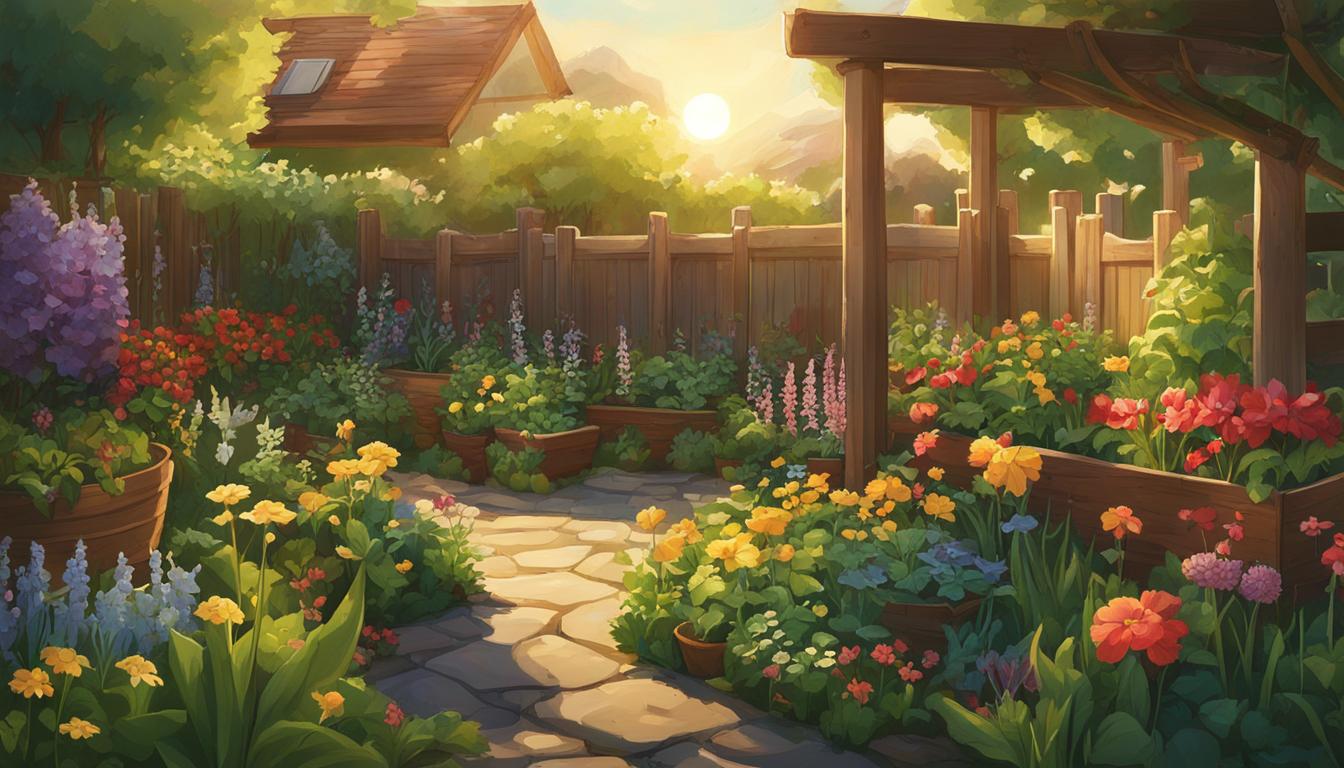
Are you interested in harnessing the healing power of nature right in your own backyard? Creating a medicinal plant garden in small spaces is not only possible but also a rewarding endeavor. Even if you have limited space, you can still grow a diverse range of medicinal plants that can promote wellness and health.
In this article, I will provide you with practical tips and ideas to help you successfully plan and create a compact herb garden in small spaces. From planning and design to herb selection and accessibility, I will guide you through the process of optimizing your small garden to cultivate these beneficial plants.
Key Takeaways:
- Creating a medicinal plant garden in small spaces is achievable and fulfilling.
- Proper planning and design are crucial to maximize the potential of your small herb garden.
- Consider permaculture design principles to make the most of limited space.
- Choose the right herbs that are well-suited for small gardens and align with your intentions.
- Customize your herb garden to cater to your specific needs and add aesthetic appeal to your space.
Getting Started: Planning and Design Steps
When embarking on the journey of creating a medicinal herb garden in small spaces, proper planning and design are key. By educating yourself on the nature of herbs and their growing requirements, you can ensure the success of your compact herb garden. Let’s explore the essential steps to get started on planning and designing your small space garden.
Brainstorming and Observation
Before diving into the design process, take some time to brainstorm and observe your space. Consider factors such as the amount of sunlight your garden receives, any existing structures, and the overall layout of your small space. This initial step will help you determine the best approach to designing your medicinal herb garden.
Exploring Design Options
Next, explore different design options that suit your specific needs and preferences. If you already have an existing garden, think about integrating herbs into the available space. This can create a visually appealing and functional garden that incorporates both ornamental and medicinal plants.
Alternatively, you may choose to create a dedicated wellness herb space, where medicinal plants take center stage.
Consider the overall aesthetics of your garden and how the design will fit harmoniously into your small space. Look for creative ways to maximize the use of vertical space, such as installing trellises or hanging baskets. This will help optimize your garden and make the most of the available area.
When planning and designing your medicinal herb garden in a small space, start with brainstorming and observing your surroundings.
Explore design options that suit your needs and preferences, whether it’s integrating herbs into an existing garden or creating a dedicated wellness herb space. Be creative in maximizing vertical space to optimize your small garden.
Stacking Functions: Maximizing Space with Permaculture Design
In small space herb gardening, permaculture design offers a valuable approach to maximize space utilization and create a sustainable garden system. By understanding and applying the concept of stacking functions, you can optimize your limited space and grow a diverse range of herbs for your medicinal plant garden.
What is Permaculture Design?
Permaculture design is a holistic approach that mimics natural ecosystems to create productive and sustainable landscapes. It emphasizes the interconnection between different elements of a garden and seeks to maximize the functions performed by each element.
In the context of a medicinal herb garden, permaculture design involves grouping plants together based on their complementary functions. For example, you can cultivate herbs with deep roots alongside shallow-rooted varieties to efficiently use the available soil depth.
Vertical Gardening for Herbs
Vertical gardening is another permaculture-inspired technique that can greatly benefit small space herb gardens.
By utilizing vertical space, such as walls or trellises, you can grow herbs that naturally climb or vine, such as rosemary, thyme, or cucumber. This not only saves valuable ground space but also provides additional growing area for your herbs.
Consider creating vertical herb gardens using hanging baskets, vertical planters, or repurposed pallets. This method not only adds visual interest to your garden but also allows you to grow more herbs in limited space.
| Benefits of Permaculture Design and Vertical Gardening for Herbs |
|---|
| Maximizes space utilization |
| Increases herb diversity |
| Optimizes soil and water usage |
| Reduces weed growth |
| Enhances visual appeal of the garden |
By leveraging permaculture design principles and incorporating vertical gardening methods, you can create a thriving small space herb garden that maximizes space, promotes plant synergy, and offers an abundance of medicinal herbs for your health and wellness needs.
Choosing the Right Herbs for Small Gardens
When it comes to creating a compact medicinal plant garden in small spaces, choosing the right herbs is essential for success. Not all herbs thrive in limited areas, so it’s important to select those that are well-suited for small gardens. Here are some top herbs to consider:
- Sage: Known for its medicinal properties and culinary uses, sage is a hardy herb that grows well in small spaces.
- Lavender: With its beautiful flowers and soothing aroma, lavender is a popular choice for small gardens. It also has a variety of uses in natural remedies.
- Mint: Mint is a fast-growing herb that can be easily contained in pots or small garden beds. It’s known for its refreshing flavor and medicinal benefits.
- Chamomile: This herb is prized for its calming properties and is often used in teas and poultices. It can be grown in small pots or as part of a larger herb garden.
- Lemon balm: Lemon balm is a versatile herb that can be used in teas, tinctures, and balms. It’s easy to grow and does well in small garden spaces.
- Echinacea: Known for its immune-boosting properties, echinacea is a beautiful herb that can be grown in containers or small garden beds.
These are just a few examples of herbs that are well-suited for small gardens. When selecting herbs, consider their medicinal properties, growth habits, and the specific needs of your garden. By choosing the right herbs, you can create a compact medicinal plant garden that thrives in even the smallest of spaces.
Growing Information for Selected Herbs
| Herb | Growth Habit | Light Requirements | Watering Needs | Soil Type |
|---|---|---|---|---|
| Sage | Perennial shrub | Full sun to partial shade | Well-drained soil, moderate watering | Loamy soil with good drainage |
| Lavender | Perennial shrub | Full sun | Drought-tolerant, infrequent watering | Well-drained soil, sandy or loamy |
| Mint | Perennial herb | Partial shade to full sun | Regular watering, keep soil moist | Moist, well-drained soil |
| Chamomile | Annual herb | Full sun to partial shade | Regular watering, keep soil evenly moist | Well-drained soil, slightly acidic |
| Lemon Balm | Perennial herb | Partial shade to full sun | Regular watering, keep soil evenly moist | Well-drained soil, enriched with organic matter |
| Echinacea | Perennial herb | Full sun to light shade | Well-drained soil, moderate watering | Loamy soil with good drainage |
These growing information details will help you provide the optimal conditions for the selected herbs in your small garden. By considering the specific needs of each herb, you can ensure they thrive and provide you with the medicinal benefits you desire.
Accessing Your Herbs: Placement and Convenience
When planning the placement of your medicinal herbs in a small space garden, it’s important to consider accessibility. Think about how often you’ll need to harvest or interact with the plants and choose convenient locations accordingly.
If you frequently use the herbs in your cooking or wellness routines, it’s best to place them in easily accessible spots near your kitchen or outdoor living areas.
One strategy is to incorporate the concept of permaculture zones into your herb garden design. Permaculture zones determine the best placement for different types of plants based on their frequency of use.
For example, frequently used herbs like basil, parsley, and mint can be placed in Zone 1, which is closest to your home or kitchen. Herbs that require less frequent attention, such as lavender or echinacea, can be placed in Zone 2 or 3, further away from your main living areas.
Consider the height and growth habit of your herbs when determining their placement. Taller herbs like rosemary or sage can be placed at the back of a garden bed or along a fence to maximize vertical space. This allows you to make the most of your small garden while ensuring easy access to the herbs you need.
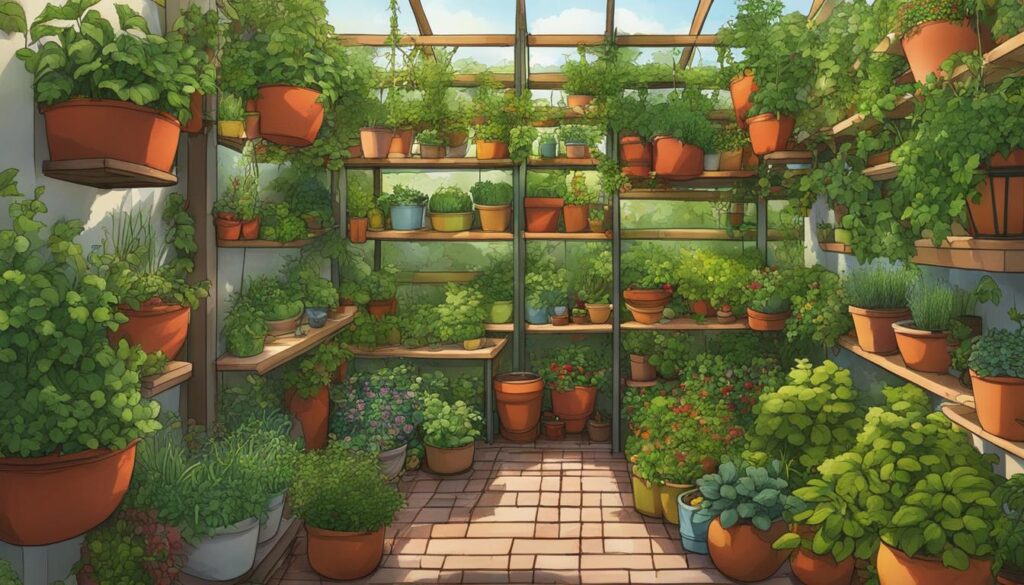
Placement of Medicinal Herbs
| Herb | Placement |
|---|---|
| Rosemary | Back of garden bed, along a fence |
| Basil | Zone 1, close to kitchen |
| Parsley | Zone 1, close to kitchen |
| Mint | Zone 1, close to kitchen |
| Lavender | Zone 2 or 3 |
| Echinacea | Zone 2 or 3 |
By considering accessibility and incorporating permaculture principles into your small space herb garden, you can create a convenient and efficient layout that allows easy access to your herbs when you need them.
Container Gardening for Medicinal Plants
Container gardening is an excellent option for growing medicinal plants in small gardens. Not only does it offer flexibility and portability, but it also allows you to maximize your limited space by utilizing non-traditional areas like balconies, windowsills, or even small patios.
By choosing the right containers and following a few simple guidelines, you can successfully cultivate a variety of herbs in your compact garden.
When selecting containers, opt for ones that provide adequate drainage to prevent waterlogged soil. Terra cotta pots or containers made from recycled materials are popular choices.
Choose a container size appropriate for the plant’s root system to ensure proper growth. Remember to place saucers or trays under the pots to catch any excess water.
Herbs suitable for container gardening in small spaces include mint, lavender, chamomile, and lemon balm. These herbs are not only compact in size but also adapt well to different climates and types of soil.
They can thrive in pots, making it easier for you to control their growth and provide the necessary care. Additionally, consider grouping herbs with similar water and sunlight requirements in the same container to simplify maintenance.
In summary, container gardening is an effective way to grow medicinal plants in small gardens. It offers flexibility, portability, and the ability to optimize non-traditional spaces.
By selecting appropriate containers, choosing the right herbs, and providing the necessary care, you can create a thriving herb garden that caters to your wellness needs.
Comparison of Herbs Suitable for Container Gardening
| Herb | Light Requirements | Watering Needs | Container Size |
|---|---|---|---|
| Mint | Partial shade to full sun | Regular watering | Medium |
| Lavender | Full sun | Low to moderate watering | Large |
| Chamomile | Full sun to partial shade | Regular watering | Medium |
| Lemon Balm | Partial shade to full sun | Regular watering | Medium |
The Importance of Intention: Customizing Your Herb Garden
Creating a personalized herb garden allows you to cater to your individual herb needs and wellness goals. By customizing your garden, you can address specific health issues or support your desired remedies.
Whether you’re looking for herbs to combat cold and flu symptoms, lower blood pressure, or aid in wound care, tailoring your herb garden to your unique requirements is essential.
When customizing your herb garden, it’s important to research and choose herbs that align with your intentions. Consider the medicinal properties of different herbs and select those that offer the specific benefits you’re seeking.
For example, if you’re looking to boost your immune system, herbs like echinacea and elderberry can be valuable additions. On the other hand, if you’re looking for herbs with soothing qualities, chamomile and lavender can provide a calming effect.
To ensure that each herb thrives in your small garden, pay attention to their individual needs. Some herbs require full sun, while others prefer partial shade.
Take into account the soil requirements and water needs of each herb, and provide the appropriate conditions for their growth. By understanding the specific needs of your chosen herbs, you can create a customized herb garden that fosters optimal growth and health.
Remember, your herb garden should be a reflection of your unique needs and intentions. By personalizing your garden, you can not only cultivate herbs for your wellness routines but also create a space that brings joy and satisfaction. Embrace the flexibility of a personalized herb garden and enjoy the benefits of growing your own medicine right at home.

The Importance of Intention: Customizing Your Herb Garden
| Herb | Medicinal Properties |
|---|---|
| Echinacea | Boosts immune system |
| Elderberry | Supports immune health |
| Chamomile | Soothes nerves and promotes relaxation |
| Lavender | Calming and stress-relieving properties |
Finding Beauty in Medicinal Herbs
While the primary purpose of a medicinal herb garden is to cultivate plants for their healing properties, it’s important not to overlook the aesthetic appeal of these remarkable plants.
The beauty of medicinal herbs can enhance the visual appeal of your small space garden, bringing color, texture, and a sense of tranquility to your outdoor oasis.
Herbs such as bergamot, borage, chamomile, chrysanthemum, echinacea, and lavender are not only prized for their medicinal properties but also for their stunning flowers.
These herbs can add a vibrant burst of color to your garden and attract pollinators like bees and butterflies, further enhancing the natural beauty of your space.
Integrating these eye-catching herbs into your small space garden is a simple way to create a visually engaging landscape. Consider planting them alongside other herbs or flowers to create a harmonious blend of colors and scents.
Their delicate blooms and unique foliage can create interesting textures and contrasts, adding depth and visual interest to your herb garden.
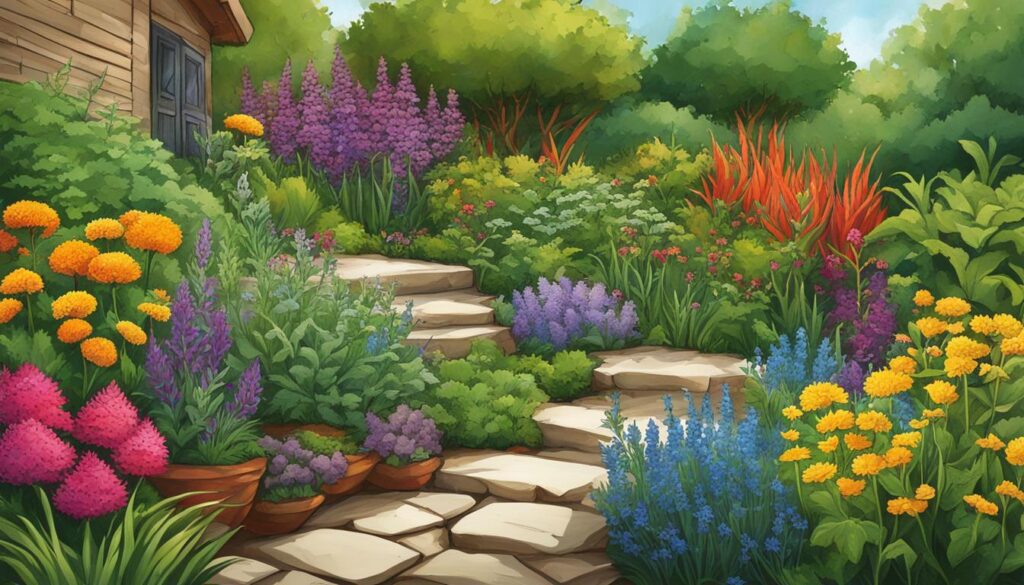
Medicinal Herbs with Beautiful Flowers
| Herb | Flower Description |
|---|---|
| Bergamot | Clusters of vibrant red, pink, or purple tubular flowers |
| Borage | Intense blue star-shaped flowers with a mild cucumber-like flavor |
| Chamomile | Daisy-like white flowers with a gentle, apple-like fragrance |
| Chrysanthemum | Multiple varieties with a range of colors and petal shapes |
| Echinacea | Distinctive pink or purple cone-shaped flowers with protruding petals |
| Lavender | Spikes of fragrant purple, pink, or white flowers |
Incorporating these beautiful herbal flowers into your small garden not only creates a visual masterpiece but also serves as a constant reminder of the healing potential they carry.
Whether you’re looking to create a peaceful sanctuary or a vibrant burst of color, the aesthetic appeal of medicinal herbs can bring joy and serenity to your small space garden.
Harvesting and Using Your Medicinal Herbs
Once your medicinal herb garden begins to flourish, it’s time to reap the rewards of your hard work. Harvesting your herbs at the right time is crucial to ensure optimal potency and effectiveness.
Different herbs have different harvesting requirements, so it’s important to familiarize yourself with the specific needs of each plant.
When harvesting your herbs, choose a dry and sunny day, preferably in the morning when the oils in the plants are at their peak. Use clean, sharp scissors or pruning shears to make clean cuts, avoiding any damage to the stems or leaves. Be sure to leave enough leaves on the plant to allow for regrowth.
Once you’ve harvested your herbs, it’s time to put them to use. There are numerous ways to enjoy the benefits of your medicinal plants. You can make tinctures by steeping the herbs in alcohol or glycerin, creating potent extracts that can be used internally or topically.
Herbal teas are another popular option, allowing you to enjoy the soothing and healing properties of the plants. Additionally, you can create homemade salves, syrups, or even incorporate the herbs into your cooking for added flavor and health benefits.
By harnessing the power of homemade herbal remedies, you can take control of your health and well-being. With a little research and experimentation, you can create your own personalized medicine cabinet filled with natural remedies.
Not only does this save money, but it also promotes self-sufficiency and sustainability. Embrace the joy of creating your own homemade medicine from the plants you’ve nurtured in your small but thriving herb garden.
FAQ
How do I plan and design a medicinal herb garden in small spaces?
To plan and design a medicinal herb garden in small spaces, start by educating yourself on the nature of herbs and their growing requirements. Then, brainstorm and observe your space to determine the best layout for your garden. Consider integrating herbs into existing gardens or creating a dedicated herb space. Additionally, explore the concept of permaculture design and how it can help maximize space. Vertical gardening is also a great option for small spaces.
Which herbs are well-suited for small gardens?
Some herbs that are well-suited for small gardens include sage, bergamot, borage, bronze fennel, burdock, chamomile, chrysanthemum, echinacea, elderberry, feverfew, lavender, lemon balm, licorice, marshmallow, and mint. Consider their medicinal properties and growth habits to ensure they thrive in your limited space.
How do I access my herbs in a small space garden?
When planning the placement of your herbs, consider how often you’ll need to harvest or interact with them. Place frequently used herbs in easily accessible spots near your kitchen or outdoor living areas. You can also consider using the concept of permaculture zones to determine the best placement for your frequently used herbs.
Can I grow medicinal plants in containers?
Yes, container gardening is a great option for small space herb gardens. You can grow medicinal plants in pots both indoors and outdoors. Container gardening offers flexibility, portability, and the ability to grow herbs in non-traditional spaces like balconies or windowsills.
How do I customize my herb garden based on my needs?
To customize your herb garden, consider the health issues or wellness goals you’d like to address. Choose herbs that align with those needs, whether it’s remedies for cold and flu symptoms, high blood pressure, wound care, or other ailments. Your medicinal herb garden should be tailored to the individual needs of your family.
Do medicinal herbs add aesthetic appeal to a garden?
Yes, medicinal herbs can add beauty to your small space garden. Many herbs have beautiful flowers, such as bergamot, borage, chamomile, chrysanthemum, echinacea, and lavender. These herbs can bring color and texture to your garden, enhancing its visual appeal.
How and when should I harvest my medicinal herbs?
Harvest your medicinal herbs at the appropriate time to ensure optimal potency. Explore different methods of preserving and using your herbs, such as making tinctures, teas, salves, and syrups. Learn about the specific harvesting techniques for each herb to maximize their medicinal properties.

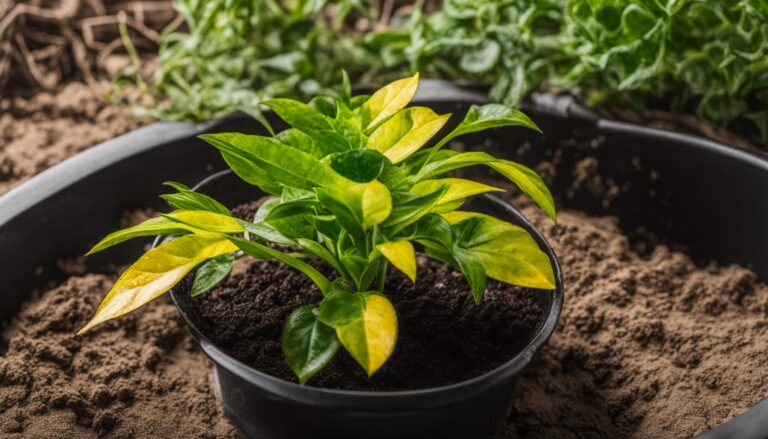
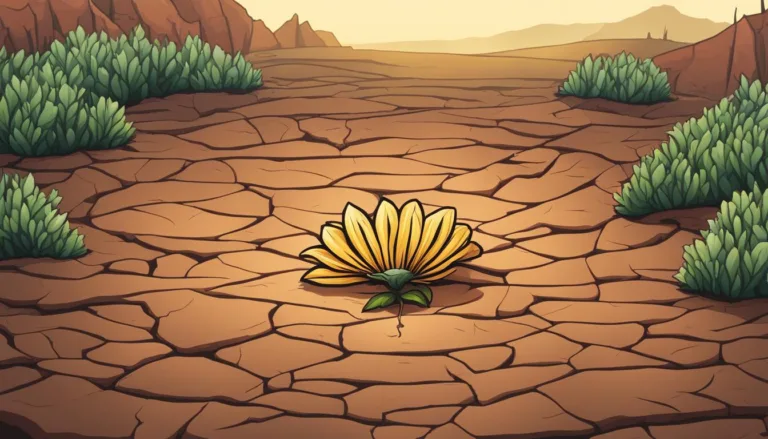

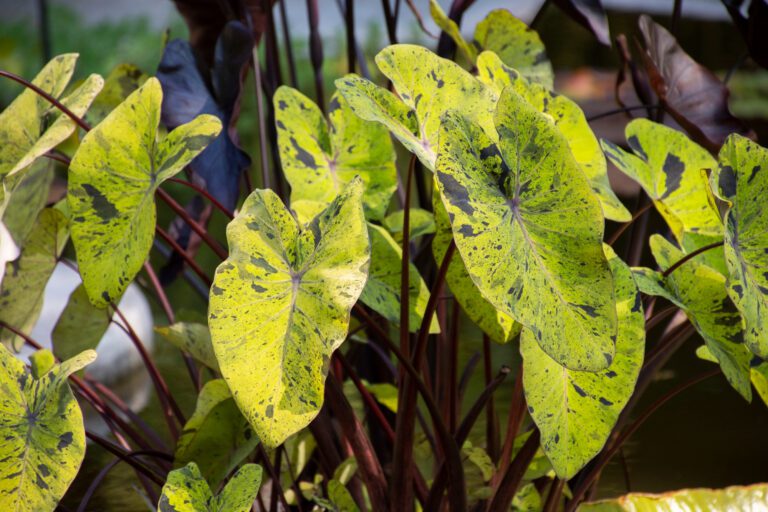
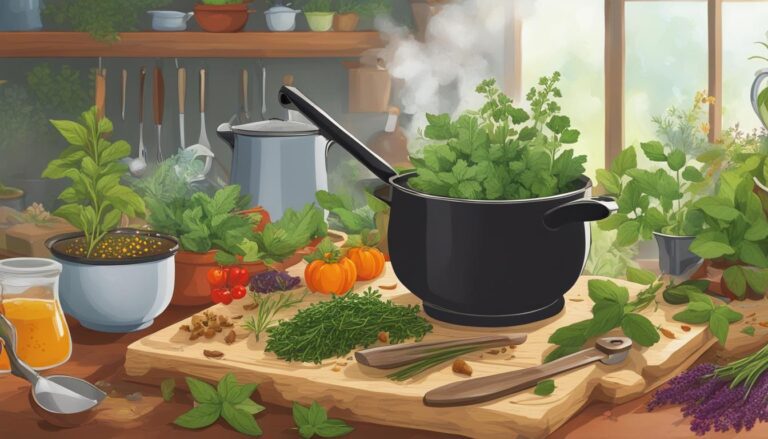
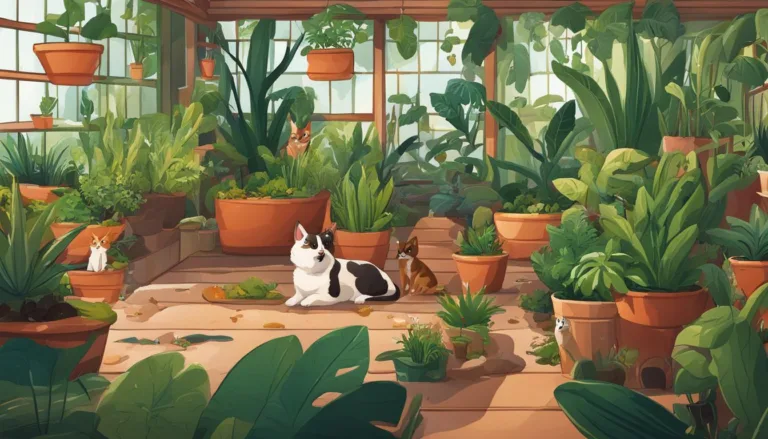
One Comment
Comments are closed.